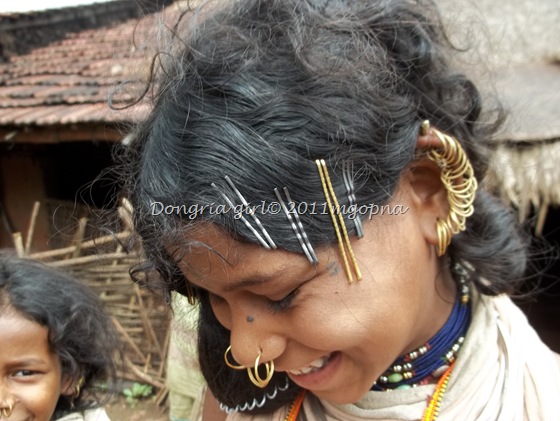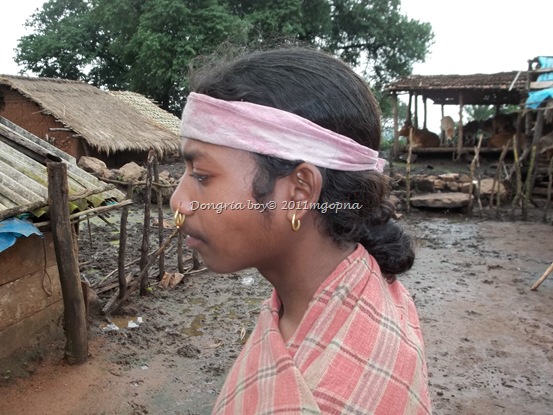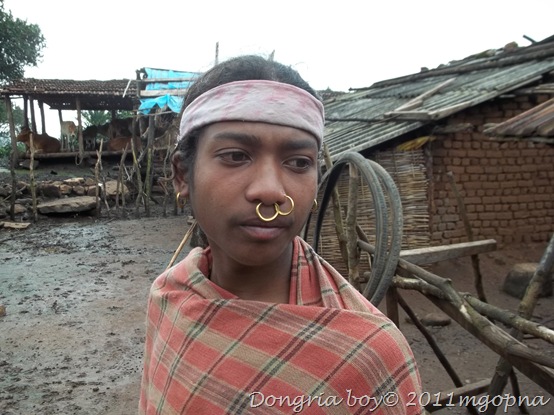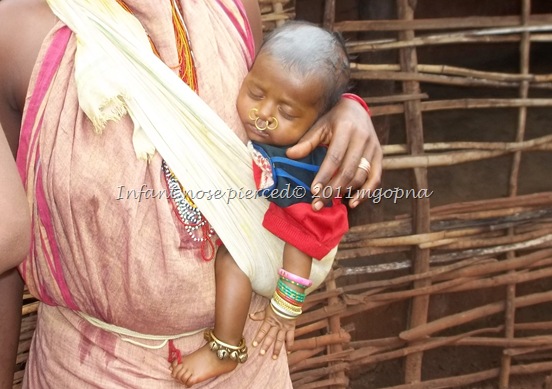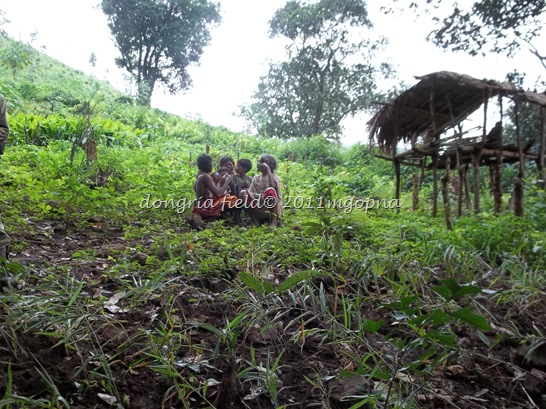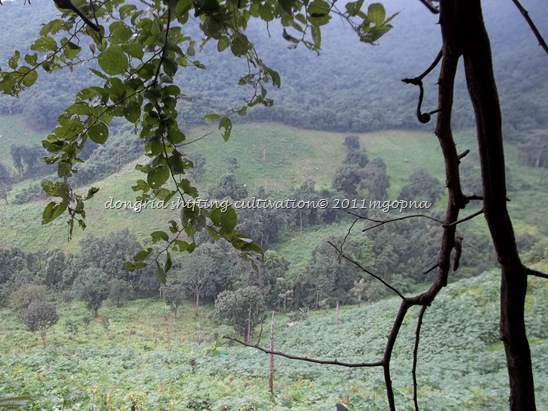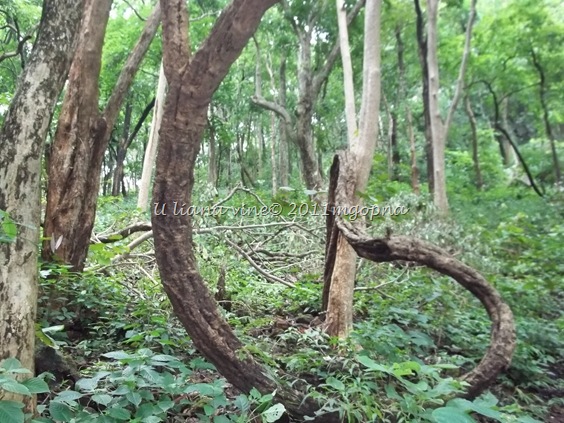It is a unique experience to climb Niyamagiri hills and enjoy beauty of the nature there. At the same time, omitting to say about the beauty of the folks living in Niyamgiri hills will be a great mistake. On hearing the word beauty, your first imagination will be of about the girls living there, but I have to say some other kind of beauty I could find in them, such beauty that cannot see in so-called developed societies.
In Niyamagiri the Dongria villages are small, of eight to twelve houses in a row, a maximum I found here is of eighteen houses, and you could imagine the village population then- average will not be more than hundred. In society of Dongria Kondhs, women enjoy the right of equality and sometime better to say they enjoying more rights than male have. Because these female members have some indispensable rolls in the family as their help needed inside and outside of the house. They have to do their household works from early morning before remaining members wake up to until every one of the family go to bed. They starts their works with cleaning outside of house, then go to fetch water for drink and cook from Jharana (stream) and cook and fed each one of the family. Next, she has to go with her husband to help him in cultivation, go to the market to sell or barter vegetables for necessities more over she has to take care of the younger children in the family too. Mean she will be working hard throughout the day. See the tolerance and will power of these women’s. The rights enjoying are well deserve by the women of Dongria tribes. The same reason the families considering the female members as their asset to the family.
One of the surprising things I could hear from these people are their custom of marriage. They select spouse from other villages but strictly, from same cast, most of the marriages are love marriage with the acceptance of villagers. There is a practice of eloping also and after that, the marriage formalized in front of clan head. However, the surprise I earlier said above is the Bride price. The bridegroom has to pay bride price to her parents before the marriage. Is it not surprising? We so called civilized people can ever imagine this kind of practice. (Some cast and region are exception in this case). Dowry is one of the curses gripped in the Indian societies now a day. Dowry deaths are not news today. Most of the dowry deaths are not reporting properly, either dowry deaths become accidental deaths in report. Our society considering girl children as burden to family so because these dowry deaths, female feticides and poor male female ratio existing in India. We the civilized, developed people need to learn from these primitive tribe of Dongria Kondh, how to respect the contribution of women in our family and in society and to consider as an asset and equality.
All of the above the Dongria Kondhs are God fearing people and know to respect the culture and values of their society. They have faith in their beliefs. They have evolved a system to continue their culture and values generation after generation for this in Dongria villages there is a Daasala (a kind of education system with boarding) where all the girl children compulsorily to stay till their maturity. From these Dasalaas they learn the culture and values, custom and tradition, rituals, household works, and arts like songs and dances. See the people’s responsibility towards their society. They know the social values are inherited from mother only, so they giving importance to female education. The above are inherent beauty of these tribe Dongrias.
Now it will be injustice if I do not say about the beautiful girls I could find in the Dongria villages. They are very much beauty conscious, their hairstyle ornaments and tattoos all are distinctive and giving them a different kind of beauty that cannot seen in cities. They are poor moreover they stays in hilltop jungles still these girls are like girls in plains, I wonder how much conscious they are on their beauty. I am unable to explain, here also I stick on my philosophy “a picture can explain much more than many words can do” so see the pictures of beautiful Dongria girls.
